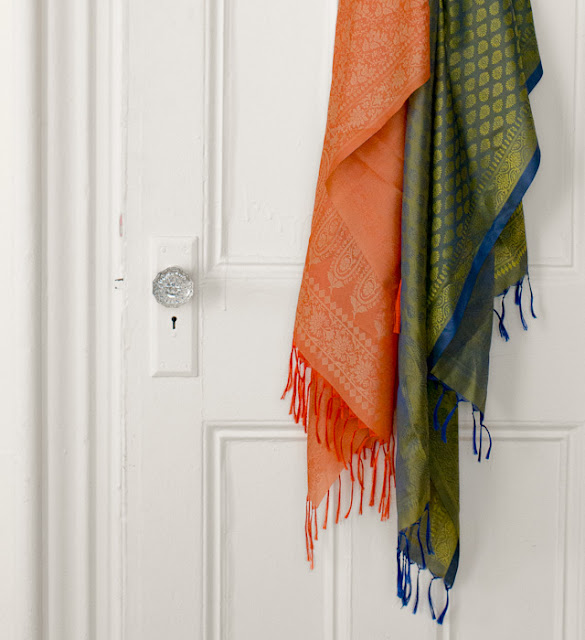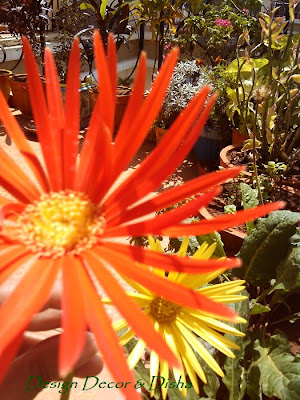When we added the butcher block top to our island almost two years ago, the installer recommended that we add corbels for support. I thought it would be fun to add farmhouse legs instead ... two years later, we FINALLY did it!
I found a great website, Osborne Wood Products ... they have several kinds of fabulous products at very reasonable prices! I found just the style/size we wanted, and a few days later they arrived!
All I had to do was paint a coat of AS Old White, followed by two coats of AS Chateaux Grey onto each leg ... added a bit of distressing and a layer of clear wax. I then wedged them up under the butcher block ... added a bit of hot glue in between the legs and the butcher block top to secure them ... and, voila!
AFTER!
We love the character they add and how they contribute to the farmhouse feel!
It's hard to believe that our island once looked like *this*:
Speaking of changes ... we're just about done with the kitchen refreshing! AND, I've got a few little things planned for our breakfast area. For a long time, I've wanted French Country chairs, but the prices have been a bit more than we wanted to spend. This past weekend, we visited a fabulous store nearby called Primarily Pine ... they had EXACT chairs I've been looking for! They're unfinished (which saved on the cost) ... all I have to do is stain the seats (Walnut) and paint the chairs either AS Old White or Pure White. Aren't they pretty?
I'm envisioning a farmhouse table, these chairs and parsons chairs at the head of the table. We'll see how it all turns out!
One more project ... what do you think of this French fabric?! I'm eventually going to add them to our dining room chairs.
Just another day in my crazy life! Happy Sunday, friends!
Thanks for stopping by,
I'm linking up with:
Savvy Southern Style/WUW
I found a great website, Osborne Wood Products ... they have several kinds of fabulous products at very reasonable prices! I found just the style/size we wanted, and a few days later they arrived!
All I had to do was paint a coat of AS Old White, followed by two coats of AS Chateaux Grey onto each leg ... added a bit of distressing and a layer of clear wax. I then wedged them up under the butcher block ... added a bit of hot glue in between the legs and the butcher block top to secure them ... and, voila!
AFTER!
We love the character they add and how they contribute to the farmhouse feel!
It's hard to believe that our island once looked like *this*:
Speaking of changes ... we're just about done with the kitchen refreshing! AND, I've got a few little things planned for our breakfast area. For a long time, I've wanted French Country chairs, but the prices have been a bit more than we wanted to spend. This past weekend, we visited a fabulous store nearby called Primarily Pine ... they had EXACT chairs I've been looking for! They're unfinished (which saved on the cost) ... all I have to do is stain the seats (Walnut) and paint the chairs either AS Old White or Pure White. Aren't they pretty?
I'm envisioning a farmhouse table, these chairs and parsons chairs at the head of the table. We'll see how it all turns out!
One more project ... what do you think of this French fabric?! I'm eventually going to add them to our dining room chairs.
Just another day in my crazy life! Happy Sunday, friends!
Thanks for stopping by,
I'm linking up with:
Savvy Southern Style/WUW
Becca


.jpg)




























.jpg)











-crop.JPG)



